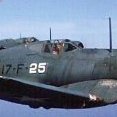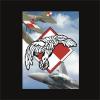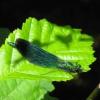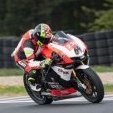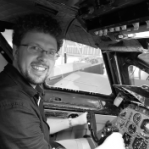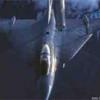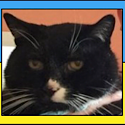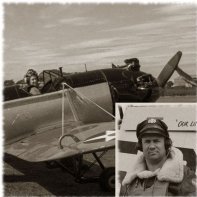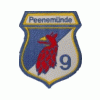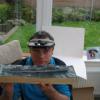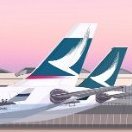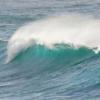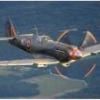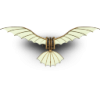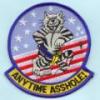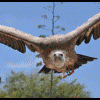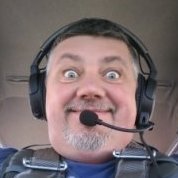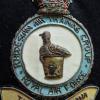Leaderboard
Popular Content
Showing content with the highest reputation on 15/01/19 in all areas
-
Very challenging and fun build on the Kitty Hawk F-35B STOVL Marine Corps Lightning. I started about eight months ago did a ton of research to find the most detailed photos. The aircraft has allot of openings so it only seems right to pay attention to the detail in each area. To give detail but not over do it. Also allot of research and test swatches on the paint. RAM panels overall paint scheme has to be very sharp it’s a challenge for the most seasoned modeller as the aircraft has not been in service that long and even carrier Ops show minimal weathering. The engine and aft underside seems to take the brunt of the weathering. I bashed the hell out of this kit replacing or reworking the engine, rear rudders, leading edge spoilers, wing flaps, vertical stabilizers, landing gear, wheels, cockpit and decals. Lots of wiring and hydraulics added to the landing gear, weapons and landing gear bay. The kit is fair at best the surface detail on the main body upper and lower portion is there but that’s about it. Biggest challenge was the lack of any detail on that gorgeous rotating exaust nozzel Lockheed Martin designed found great photos to work from. If you have any questions on the build paint colours, PE add on kits please feel free to contact me.30 points
-
I did this hornet in 2002 recently unpacked it and did some repairs. I always like how the Navy deals with spot corrosion at sea with a spray can hence the mottled finish. I cut out and repositioned all the flaps and rudders decal kit was after market. Photo eched parts were non existant at the time so the kit was as is modeler makes the details from scratch.25 points
-
Hello Dears, In 2017, I started a Airfix Seafire 17, I've got a freightdod model decal sheet with post war Griffon Spitfire and feel the urge to make one of these ladies !! Bugger !! The one I choosed is a Seafire FR 17 !! Then with the help of @Miggers (you're missed man !) I started to learn about Seafire wings Then came our Dear @Troy Smith with a full load of pertinent informations !! And it induce me in building not one but 2 Seafires 17 !! At first I wanted one with unfolded wings and the other with folded wings BUT !! My already distorted mind started another funny thing…. Why not building an OOB Seafire and modify the second one to REALLY conform the plans ?? So it's done now ! It is up to you to decide if the difference is Worth the difficulties…. Whatever I took a lot of pleasure, experienced some new swearing sometimes… But all in all, it's a good experience !! Note to the rivet counters !! There is 2 things that have been modified on both aircrafts 1st The propeler blades…. I cannot even think about letting the Airfix thingies !! 2nd The seats, I put my own resin seats on all the Seafire !! Do not take account of the modification to turn her into a FR17 ! That's another game and this is not the point here !! The question is which one of the 2 ladies is now conform to the plans and measurements ??? Okay, Wilco for everyone ?? Let me introduce you to the dames, here's the first one ! Seafire 17 from 800th Sqdn aboard HMS Triumph circa 1947 AND partially based at Hal Far, Malta I read somewhere that inert or exercise rockets have their heads painted in blue ! so !24 points
-
KIT: Eduard ‘weekend’ Spitfire Mk.IXe PILOT: JP productions RAF pilot MARKINGS: Montex PAINTS: Alkan, Mr Color, Tamiya, UMP/Stynylrez primer, vallejo This is my version of Wing Commander Rolf Arne Berg’s Mk.IX Spitfire that he had painted with the Norwegian stripes replacing the RAF wing roundels The build log can be found here… https://www.britmodeller.com/forums/index.php?/topic/235047405-148-spitfire-mkix-rolf-arne-berg/ until next time as always, any suggestions, recommendations or comments will be gratefully received. rgds John(shortCummins)21 points
-
This is my last work from year 2018, a Russian Il-2, from Tamiya, in 1/72 scale. It was a pretty easy built, used some photo eched parts and canopy mask from Eduard, and Mr. Color.18 points
-
At 1-st September 1939 Germany attacked Poland, at 17-th September the Soviets as German ally invaded Poland and this was the End of Second Republic. The last battle from the Polish regular army was at 5-th October by Kock. After that the Poles fought in underground and in France, England and all other countries which was fought against the Nazis. In Jalta they were "sold" Stalin by Roosevelt and Churchill for the next 45 years. The Polish Air Force never flown the PZL P.24 but ... this is only my idea - a Polish P.24 in spring 1940 near to Kiev (Ukraine - Soviet Union).18 points
-
Now, the second Lady ! I really loved that paint sceme !! I choosed to put the wing fuel tanks in sky to add at bit of colour ! This is a FR 17 from 728th FRU Sqdn at Hal Far, Malta… Did I have some fixation with Hal Far ??? This aircraft was flown until the '50s so they were a bit tired and stained but well maintained !! I seriously prefer my own resin seat, do you see what I mean ?? Note for my friend @The Spadgent these 2 have their doors open…17 points
-
Dear Friends Christmas was good for progressing my Focke Wulf projects. This is the Tamiya 1/72 kit with Resi-cast PE And Brassin wheels Oh and brass MGs and cannon from Master I think? Markings are for JG6 who I think were ex-bomber pilots hastily converted to fighters Hope you like it? Andrew15 points
-
Thanks AW Some sanding this morning before I go. Nose light before and after: on Flickr Seam sanded and polished. I'll leave her like this for a couple of days:15 points
-
Spitfire RAF 303, Sqdn, Jan Zumbach Model Airfix 1:24 model made straight from the box without additives. I was wondering what to say about this model? The words that come to my mind are not positive so I will not write anything about the model. Kit: Airfix Decals: Techmod13 points
-
*** Slightly better photos added Feb 2021 *** Still struggling to get really good snaps of this big bird but at least the lighting is a better in the photobox. Enjoy! Hi all, photos of my finished Academy 1/72 B-29, sorry for the distinctly mediocre picture quality, haven't really figured out how to photograph big models like this... The scheme is "Celestial Queen" with decals from warbirds and I also added the Eduard etch set. She's painted with various shades of Alclad - it was a bit of a battle at times as I was pretty much learning how to airbrush and how to do NMF as I went along. I enjoyed detailing the cockpit and scratch built a few bits and pieces like a lamp, map and headphones for the radio operator. The front of the fuselage is held on with little magnets so you can take it off to see the detail inside (looks better in real life than in the photos!). This works quite well but if I was doing it again I'd make the whole upper half come off so the joins appear along panel lines rather than on top. I also put quite a lot of effort into the bomb bay with doors open and all those bombs to decal! It took me most of 2018 to get done but in the end I'm really happy with it and it looks pretty cool alongside the B-17 with matching red wing tips! I learned absolutely loads along the way, thanks to those who provided help and encouragement, the WIP is here: Enjoy!12 points
-
Refueling F-16XL #2, 75-0747, assigned to the F-16XL Combined Test Force (CTF), 6510th Test Wing, Air Force Flight Test Center, Edwards AFB. The KC-10A was out of March AFB. This event taking place at dusk over the Sierra Nevada foothills, March 1983. XL-2 in pre-contact position, waiting for clearance from the "boomer". I can still hear the boomer softly singing "Boom Operator" to the tune of "Smooth Operator" during this event. Taking fuel, couldn't see the boom from my position in the boom operator's station. This image was used in the CTF to emphasize the "C" stood for "Combined". The pilots wear the patches of AF Systems Command and Tactical Air Command. Other players in the CTF were AF Operational Test Center, General Dynamics, Pratt & Whitney, and General Electric. Disconnect from the boom as the sun gets lower. Thanks for looking, Sven12 points
-
So I should also have a fixation with the 800th Sqdn …. And HMS Triumph… Since… Both 800th Sqdn, both aboard HMS Triumph… But 1947 in Mediteranea… And 1950 In Korea !! And as usual a family shot ??? The Seafire family is growin'up ! Okay, I'll be back later, open to comments as usual !! Have a great modelling time !! Sincerely. CC11 points
-
So tonight I watched the recent Spitfire documentary and masked the canopies, nearly lost several fingers when my vision kept inexplicably going blurry, but got the job done: Then one of those disasters that so often grace my build threads struck: as I was clipping off a carb intake, it slipped through my fingers and vanished with a dull sonic boom. A protracted search and sweep of the floor failed to turn it up, but did discover a dead mouse(!!!), which was disposed of in the outside dustbin with a short non-denominational service. After some mild panicking, I remembered I had a Hasegawa carb intake left over from a botched attempt to make a metal wing Hurricane I out of that and the Airfix Hurricane (glad I failed now, for obvious reasons), and so I tried it on the kit. Hasegawa (L), Arma (R). Hm. Well that's not great. But then I realized something. Problem solved. (Yes, my handwriting is poor.) (As you can just make out, I also did the prop tips.) This leaves me with a long-term problem (the only decal option I have for a Vokes Hurri I is the kit option, which violates a personal modelling rule [the "Lethal Weapon 2 rule"]), but I've spent my whole life alternately screwing Future Me or becoming the me being screwed, so I'll figure something out.11 points
-
Boeing 737 Airfix 1:144 Braathens decals from Lima November I've developed a liking for taking an Airfix 737 out of the box and improving it. I must have done 5 or 6 now. Basic changes are: Lengthen the engines by 6mm Build up the pylons from the early skinny style to the more common fat type, Cut out the shallow main and nose wheelbays, and build new ones Cut away the cockpit and install a Daco Clear part from one of their 737 kits. Scratchbuilt a cockpit and out in a couple of N gauge seated figures for pilots. The basic mods make a huge difference to the appearance of thee model. Decals are from Lima November, and absolutely superb. The sheet gives you this style and he later one where the cheatline was dropped below the window level, but I prefer this. You also get every registration and fleet name for all Braathens 737-200's to choose from. (BTW, it is pronounced Brawtens, a double A in Norwegian is an 'AW' sound, There - my educational point for the day!). I really enjoyed building this, for once I didn't make any major bloopers. Can you see the co-pilot? The scratchbuilt wheel bays The crew are really difficult to photograph, but you can make them out here. In real life they are quite easy to see. And it wouldn't be complete without 'Something else' alongside! In this case a Welsh models Vac F-27 also with Lima November Braathens decals. The scratchbuilt cockpit Overview of the most obvious mods during construction. Thanks for looking John9 points
-
Hiya Folks, I`m on a bit of a roll today and have also finished off the lovely Airfix Defiant kit which was an absolute joy to build,.... definitely one of the best of recent Airfix kits! I have wanted to build a model of Defiant Mk.I night fighter N1801, PS-B, (Coimbatore ii) flown by ace crew Frederick Hughes (pilot) and Sgt. Fred Gash (air gunner) for some time now as they were a superb top scoring crew on the type and read about them years ago, they were also based at Colerne ( which I know quite well and was almost posted there in the 90`s!) and because the aircraft sported the Red Hand of Ulster,... which was also the insignia of the best British Army unit that I ever served in! The decals are not included in the kit,..... so I used a combination of kit decals and Montex mask set KA48316. Here is the subject aircraft; And here is the model alongside a memento from my old unit!; DSCF3102 by Tony OToole, on Flickr And some more pics,.....sorry if there are too many; DSCF3054_NEW by Tony OToole, on Flickr DSCF3067_NEW by Tony OToole, on Flickr DSCF3056_NEW by Tony OToole, on Flickr DSCF3066_NEW by Tony OToole, on Flickr DSCF3065_NEW by Tony OToole, on Flickr DSCF3060_NEW by Tony OToole, on Flickr DSCF3063_NEW by Tony OToole, on Flickr DSCF3059_NEW by Tony OToole, on Flickr DSCF3058_NEW by Tony OToole, on Flickr Cheers Tony9 points
-
And now let's compare… Even if we both know that Nothing dcompare to us It's now up to you Chaps !! Let me know what you think about the Mods !! Which one has received surgeries ??? CC9 points
-
Airfix P40N Russian Lend lease Markings 20th GIAP (Guards Fighter Regiment) My first RFI on Britmodeller. A quick Mojo restorer as part of an Impromptu Group Build on the Irish IPMS website. Markings are a mix of spares box and hand painted. Weathering on the distemper is based on the fact that the various version of the scheme on hte web show different white areas so I did my own thing. Thanks for looking8 points
-
I find some of the comments about the old airfix kits quite amusing. I grew up in the 1970's and built loads of Airfix and Matchbox kits without any real problems. Filler wasn't a big concern ( at least in the early days ), neither was cockpit detail, or dockyard rivets or raised panel lines, or to start with, painting canopy frames, or even the exact correct shades of paint if my pocket money wouldn't stretch to another 40p or what ever it was for a tinlet! Even back then there was flash on the models to be trimmed, sanding to get bits to fit etc., but I still enjoyed making and painting them. I've built old kits since and yes, they need a bit of effort but still turn out a nice model in the end. It seems that far too many "modellers" these days are actually jigsaw assemblers, and less so being modellers!! When you're 10 and buying a kit, you don't care if the outline is slightly off, or the trailing edges are too thick or the panel lines are raised, you just wanted exciting subjects that you saw in your Commando comics, and bring them to life with a few fingerprints, paint runs and imagination. The Airfix dH88 Comet is somewhat old and ill-fitting, and yet with just a little effort, builds into a very nice model. Roll on more Vintage Airfix releases, and I hope they sell really well for them!!8 points
-
8 points
-
8 points
-
This is my 2nd model from SB, again a full resin kit. The build was really a pleasure and the kit is worth every Cent. I bought mine from the Bay, meanwhile it's on stock at Lindenhill again. I'm more or less happy with the result, except the glazing and the aerials. Plane flown by Maj. Victor Kalashnikov (15 victories in WW 2) from 291st IAP, 256th IAD 1946 in Germany.7 points
-
Small update going from the blue man group to the nearly painted crew will add a brown was over the faces and then that should be it done beefy7 points
-
Bloomin' brilliant Max. If fact revelatory in showing that - if I understand these correctly - the padded 'podium' on which the nav sat is practically the same shape as the bases of the pilot and radio op's chairs (albeit slightly taller than they). Looks like I have some correcting ahead of me on seating too! As I indicated in my previous post I've largely abandoned ideas of using much of the PE now for much of the interior (due to its inaccuracy) and am largely 'rolling my own' instead when it comes to fitting out the rear cockpit. To whit, one scratchbuilt radio-operators' table and shelving: Ditto fot the navigator's table: About two-day's worth of work in spare moments but very satisfying to have got completed. Well, nearly completed - at the last knockings this evening I managed to mangle the vertical upright at the back of the nav's table to which the duplicate instrument panel is attached (figured I'd celebrate by breaking something I guess!), hence the oversize tubing as a temporary support until some 0.3mm replacement tubing is attached. Both candidates lined-up for a photo then: ...and in temporary residence for another picture: That is btw Version 2.0 of the nav's table as the first one I built to similar dimensions as that of the radio op's. Only subsequently did I notice that unlike the latter, it does not extend out to halfway across the cockpit width, but is slightly short of halfway (though it does have an extra leaf that can be folded up when needed, and which I've added here in the 'down' position). I knew you'd notice sooner or later if I ignored that matter, hence the second attempt. In other news, I recently saw a specialist and have since been diagnosed as going prematurely deaf. Least I'll be able to build me own ear trumpets now! Take care of yourselves til next time mateys. Tony7 points
-
In today's thread drift, I bring you the result of some actual kit bashing. Fret ye not, I am sure that normal service will be resumed almost as soon as I have posted these words. I began by dragging myself into Poole to get some more plastic tube and got the lower ends of the bomb tubes cut and fitted to the model. I made a point of thinning the ends to .a more realistic thickness. While I was working on the new bomb bay, something kept nagging at me that something was missing from the interior every time that I taped the fuselage together. The penny finally dropped that the framework that I had not bothered with for the top of the rear fuselage was leaving a large area of bare plastic when I looked through the door and through the waist gun positions. Following suitable Martian expletives, it was out with the plastic rod and time to crack on with adding the missing framework. It was about now that the penny dropped that Just about every part of the interior aft of the flight deck I visible from one angle or another Martian. This means that More stringers and structure loom in my immediate future for the roof of the fuselage. That will have to wait for today as the structure I have added really needs to cure properly before I mess about with the fuselage any more. Thanks for looking 👽7 points
-
This plane doesn't really need an introduction.. But I'll make one anyway. For those of you who don't know what it is; Have you been living under a rock? The Aerospatiale-BAC Concorde was one of the first and only supersonic passenger airliners to enter service. Its design was unique, graceful and miles ahead of any of its contemporaries and up until now, no airliner has been able to surpass it. The aircraft's economic future was short-lived, though; In the end, only Air France and British Airways ordered it, paid almost entirely for by their respective governments due to low demand, rising fuel costs and high fuel and maintenance expenses. It was retired in 2003 after its only crash in Paris as well as the commercial aviation industry plummeting after the attacks of September 11, 2001. The kit is Revell's 2005 tooling of the Concorde with BA's Chatham livery, depicting G-BOAG in the 5-degree nose-down takeoff position. So, before anything else, here are the pics! The model was painted with Base White 1000 for the white basecoat and the gloss coat was Tamiya X-22 with Mr. Levelling Thinner. The metallic parts of the engines were painted with Alclad II Airframe Aluminum under XF-1 + X-22. The rest of the aircraft and the smaller components were either painted with Tamiya acrylics or Alclad II White Aluminum. Now, about the kit.. Hoooo boy, where to start? I'll probably end up writing this like it was it's own review. The first thing you notice about the kit is that it has very few parts - Only around 60 if I remember right - but for such a simple kit, it's also a major pain in the behind to assemble overall. Because of the age of the mold, expect to be trimming off sheets of flash as well. The fit of the fuselage components is fine, but the wing components are especially difficult. The way it's engineered, the entire underside of the wings + undercarriage and bottom half of the fuselage are to be fitted in one piece, but the assembly's so flimsy that it's difficult to keep all of it glued to whatever fuselage supports there are without buckets of cement or CA. This also affects the way that the upper half of the wings fits together. The whole assembly is so flimsy that it bends too easily. In the end, the seam that connects the bottom half and upper half of the wing were impossible for me to eliminate as they just kept cracking and reopening every time I put putty over it and sanded. It would be advisable to stuff some plastic card or CA and talcum powder in there so that it has some structural support. The engines were also tedious to fit together but it was possible to get a flush fit if you test fitted and sanded ad nauseam. Some of the components fit well and others simply didn't. Be careful to test fit everything and you should be able to proceed with the rest of the build somewhat more smoothly. The decals are printed by Cartograf and as a result are quite nice to work with. The adhesive isn't too strong, which on one hand means that they're easy to work with and don't get stuck the moment they're applied. On the other it also means that they're somewhat more prone to being shuffled around when you don't want them to and peeling off. For an airliner kit a lot of stencils are provided which is nice although they might seem too many for some. Check reference photos of the particular aircraft you're modelling. Some of the stencils seemed to be in wrong places in the instructions or not existent at all, especially in the engines. As mentioned in other reviews, the nose gear is too long and should be trimmed a few mm. I did this on my build but found it wasn't enough as the model still had an excessive nose-up position. The nose visor and windscreen is also wrong - The model depicts it as flat but it should be angled. I scratchbuilt this by bending a piece of plasticard and with a bunch of epoxy putty, and printed my own decals for the cockpit windscreens. Worked out pretty well, I think. The main gears need careful alignment because otherwise it doesn't fit on all fours. It doesn't show all that much on the photos, though. Closing in on a long wall of text, I certainly made more than a few mistakes during the build, but despite the difficulty I'm rather content with how it turned out. Thanks for somehow reading until this point, and any feedback would be appreciated!6 points
-
I've applied some weathering to the chassis along with adding the exhaust and front shocks so the underside is done. I've also had a go at printing the decals using Mr Decal Paper [white] which at the 3rd attempt generated something that is acceptable for this 'bit of fun' build, there are more yet to be applied.6 points
-
As per instructions of @robgizlu who wants to make me into a tank modeller . . . I've added various oil washes, splotches of many hues and assorted plant life plus rope fender The observant amongst you will spot a plant growing out of the damaged area Enjoy Kev6 points
-
Hello folks, I built this Lancaster when I was 10 or 11 years old, and found it last year in a box with a few other old models. Thanks to fellow members for identifying it as a Revell kit! Anyway, it was mostly still in one piece and I decided that it deserved a proper little paint job, since it hadn't one already! I put some putty in the gaps between the fuselage and wings, and sanded some (but not all) of the little flash burs off. One of the props had fallen off so it's glued on in a stationary position, but the other three spin freely. I also cut off and re-glued the rear landing gear into a more correct position than I originally had it. Otherwise, I just painted it... It was all done freehand with acrylics and a brush. There are no decals, as one can rather easily tell! I decided to use the letter G for the squadron ID because that's my first initial and I found some decent photos of the original online. The ED932 is also correct for that aircraft. In any case, there were lots of little mistakes with the build, but it wasn't too bad considering that I was ten or so... And I did not take all the care in the world with the paint for just that reason. It's sentimental and I tried to keep with the spirit of things! Cheers! -Gregory (p.s. I just realized there's still a bit of dust from all those years in storage, under the flaps!)6 points
-
Sloppy work by Xtradecal, again! I'd be very surprised if there was another photo. My brief experience with adding to decal research required me having to add lines to a photo to make the designer understand a specific point. The serials were often overpainted, and the one on the profile is the wrong style anyway, the early L**** and N**** batches having a very distinctive 6 inch type. Note said sheet has Sammy Allard's plane as fabric winged, while the only photo shows it to be metal winged. My sig line is there for a reason....6 points
-
I'd say enough, but there's never enough. Never!6 points
-
Well, I've got the stickers on the 21 and it's finally back to the stage it was at about three years ago - only slightly better, I think. I've gone for the well-known LA328 of 600 Sqn, using the codes, serials and squadron crests from Freightdog and the roundels and stencils from the Airfix 22. They're both looking pretty OK now: On the 18 I've done a pin wash and tried to pick out the panel lines in the outer wings to show the external differences with the XIV. I'm not planning to do a huge amount of weathering though these machines did look quite heavily used, so i'll try to reflect a bit of that if I can. Justin6 points
-
Alas Laurie I am a mere mortal to be toyed and played with upon the whims of the modelling gods... Ahh you’ve sussed me out. Top secret aerial designed to look like old bent coat hangers … Well now as the build is going reasonably with just the odd hiccup here and there – that’s what modelling is all about I suppose. What couldn’t be better than getting the build to an advanced point and then doing something that may completely mess everything up? With that in mind I thought I’d have a crack at foregoing the wing roundel transfers and replace them with painted versions. It’s something I wanted to have a go at for a while, and given the rather large wing roundels in two colours, it seems like a good opportunity to test out my latest tool gadgetry: It’s a circular cutter I purchased recently after seeing it demonstrated at Telford. It `aint cheap, but it’s a nice quality piece of kit. There is a discussion as to their merits and pros and cons vis-à-vis silhouette cutter on Bill’s CH-53 and Merlin build thread: https://www.britmodeller.com/forums/index.php?/topic/235048271-fifty-shades-other-numbers-are-available/&page=4 An interesting discussion ensued. As well as the usual mania that frequents itself on our fora, it’s also a rather nice build. Anyroad I thought I’d have a go. First you have to use a little jig which I taped firmly down so it won’t move. The cutter fits inside the jig which makes sure the concentric circles are aligned. Not quite so important for this job, but imperative if you were cutting type A1 roundels. The measuring gauge has very fine increments, thus it is quite accurate. Well after some experimentation this is what I ended up with: So tools and implements at the ready – once more unto the breach - I will need to be mindful not to spray the roundels in Aspall cider and drink the colourcoats enamels, even though they smell rather nice… The downside about masking roundels is that it’s a right blinkin’ faff to get them in the right position. You can fiddle around and adjust the transfers but you only get one shot when you paint them. It’s a matter of using the panel lines as a reference, checking that the distances below as per the compass measurements match the port and starboard. The point of this is to be consistent. As we say at work, consistency is important because even if we’re wrong, at least we’re consistently wrong… Once in position to the best of my compass measurements and mark 1 eyeball, it was on with a coat of Alclad white. Only a light dusting. I wasn’t fussed about getting a deep white undercoat down. It was then on with the red. Once this was on I nipped up the pub for a few beers. On my return I subsequently cooked a spicy pork and bean casserole. I forgot to take a picture of the outer roundel masks before I inserted the red mask, but hey I think you get the idea by now. It was then on with the blue. This was taken when the paint was still wet and with directional lighting, so as you can see the camo line shows through. It’s barely noticeable from normal angles (if there is such a thing as a normal angle), you’ll just have to take my word for it. I must say the colourcoats went on wonderfully well. They also smell like old school enamels, with the added advantage of lacking in lead additives and other carcinogenic and neurotoxin additives those old enamels had (one can’t have everything I suppose…) After eagerly anticipating the result it was off with the masking: …. Grrr There was some bleed. In fact if you look at the picture above towards the bottom right you can see that the masking tape is ever so slightly proud. Both roundels experienced this in the same position and I could have sworn the tape was nice and flush. It’s only slight but it sticks out like the proverbial cobbler’s thumb and looks as rough as the proverbial ursine posterior! Fortunately I had not yet disposed of the masking tape and was able to re-use to re-mask and touch up. It was then off with the masking a second time…and phew! Result. I really like the effect actually, even though I can’t quite capture it in this lighting. Some reflections then on painting roundels vis-à-vis transfers: Cons: Undoubtedly it is a faff and a half. Particularly aligning them as you get no second chances – didn’t help that I didn’t have the Tamiya sheet tape with the gridlines marked on it. Also it was my first attempt so naturally it would be quicker with practice. It takes much longer (especially like me if you use enamels), and you have to be mindful not to go over the top with the coats to avoid building up a ridge. I have a very slight ridge top left but hardly noticeable – hopefully after klear and coats of varnish. That said if you put down a light coat of white primer (Alclad white is ideal I find), and are using well-thinned quality paint, with practice this won’t happen. Pros: Without a shadow of doubt, what all the posters and the YouTube videos (vloggers?) say is true in spades: they look exponentially better. Seriously, I was sceptical, and given the quality of transfers (oh go on then decals) these days, I thought nah; but I am a convert. My first attempt isn’t perfect I know, but they still look pretty good. Consistency and ease for weathering / panel line washes etc. It can be difficult getting the consistency of the weathering of the decal matching that with the rest of the aircraft. Mainly panel line washes as the extra thickness of the decal makes it more difficult for the wash to take. Okay you can use pencils, but sometimes you can’t get the same colour as the other panel lines (well at least I can’t). Resilience. Even if you coat the decal in umpteen layers of klear or super-duper-hard as nails-NASA-patented-space age varnish, the weak link is the adhesive quality of the decal to the model. So if have to mask over a decal, there’s always the risk that the tape will pull away the decal (you don’t need to ask how I know this!). This won’t happen with painted markings. Okay I think I’ve droned on enough. In conclusion where you can you should give it a go, although I recommend practice on some donors first; but they do look much better. Time for my reward.6 points
-
After 20 years modelling I was tired of working in a closet on a tv tray so did some research and came accross this fantastic compartmentalize system from Hobby Zone check it out www.hobbyzone.pl http://www.hobbyzone.pl/en/12-modular-workshop-system/ The average cost of a six drawer unit is about $8.00 all in all its super affordable. You have to assemble the cabinets with some wood glue thats about it. Rare earth magnets keep it locked together. The work benches I bought from Uline.ca go to https://www.uline.ca/BL_3853/Industrial-Packing-Tables?pricode=DB877&AdKeyword=work bench canada&AdMatchtype=e&gclsrc=aw.ds&&gclid=Cj0KCQiAg_HhBRDNARIsAGHLV518Z8AzQ85TQAIYOst45IhW_QWCLHTicLswwCUQMQPXIqWOlx4-ANYaAglsEALw_wcB f5 points
-
Hello all, Here is my recently completed 1/48 Tamiya F-14D Tomcat in the markings of VF-213 'Black Lions' during their last cruise with the jet in 2005 - 2006. The build thread is here BuNo 164602 was delivered new to VF-124 in 1992, before being transferred to VF-2 in late 1994 and eventually to VF-213 in 1997. The jet saw combat in Operation 'Desert Fox' in 1998, 'Enduring Freedom' in 2001 and 'Iraqi Freedom' in 2003, when it expended the squadrons' highest volume of ordnance - a mixture of 31 JDAMs and LGBs. The jet was retired in 2006 and I believe remains in storage at AMARG. Extras used included a set of Quickboost seats, a Master pitot & AoA probe and a GBU-38 from the spares. The ROVER antenna was made from a styrene sheet. With my other Tamiya F-14D: Thanks for looking. Dave5 points
-
My second completion of the year was built for the Grumman GB on here (you'll find the WIP there if you are interested). This is my first biplane I have built since childhood but it couldn't have been easier thanks to the way Accurate Miniatures engineered the kit. The only addition to the kit parts was the aerial, everything else including the rigging was supplied. Painted using AK Interactive Xtreme Metal for the silver and Coluorcoats enamels for the main colours. There are some other photos in the Gallery of the GB A really enjoyable build and it looks like Academy will be releasing this very kit later this year so I highly recommend it to anyone who fancies tackling a biplane for the first time. Duncan B5 points
-
5 points
-
A build from 7 years ago: Have you seen those marine life documentaries depicting a seagull or similar seabird snatching the fish from the one that caught it in the first place? Well, in the early 30’s there was a French guy called Delanne who designed and built a plane named Delanne II, a side-by-side two-seater (baptized Ibis Bleu) powered by a 5 cyl Salmson 5Ac radial, later substituted by a 6 cyl radial Anzani and registered F-AJGB. He sold it to a partnership named S.F.R. which predictably enough re-named the plane SFR-10 and planned to turn it into a machine suitable for three people. The plane nevertheless is shortly after sold to J.M. Moreau, therefore becoming Moreau JM-10. Moreau hires Payen, who contributes to the design and installs a Renault 4Pb, which in turn is later replaced by a De Havilland Gipsy Major, and eventually by yet another engine, a Regnier R6. The plane receives a new registration, F-ANNI. It seems that Moreau was not preoccupied by the fact that the design was being attributed to him at this time. Attribution of the design varies according to different sources, but the one just described seems to be the right account. Monsieurs Delanne and Payen will become later on recognized names in the aviation field. The plane -and the story- do not end well. Moreau tries to sell the plane in civil war-engaged Spain and is murdered. The fate of the plane unknown. The design (especially the first incarnation) bears a certain resemblance with the Tunison Scout, a contemporary American plane. The almost organic metamorphosis of the plane involved a series of changes, besides the powerplants already described and the different noses thus created. Most noticeable are the canopy shape, the vertical stabilizer outline and the landing gear. You could build may be seven models that differ in something depicting the machine at different points in its life. I could not decide which of the planes I would like to model: F-AJGB with its greenhouse canopy, or the “streamlined” F-ANNI; so I went for both. If somebody ever tells you that it would be much easier to build a second model or variant of the plane you are building, do not believe them, it is not. As it is many times the case, no reference is 100% spot on, so you have to correct drawings, review the data and especially look at photos. Now, I have done a few 3 views, so I know it is a difficult task, especially with odd-balls for which there is little reference material; so I praise the guys that do it, but also keep a healthily distrustful eye on what they make. On the other hand, if you wait for perfect references to appear, very few plans or models could ever be drawn or built. Furthermore, as scratchbuilders know, the mere fact of producing a model dramatically increases the chances for references of all sorts to surface –notably after you completed your model-. As you can see in the photos styrene sheet and rod were mostly used for the build. Wood masters were carved for the two canopies and the engine cowl of the later variant and the vac copies were produced in the Mattel 60’s Psychedelic Machine. Wheels and pants came from the spare box and some lengths of Strutz brass material employed for the LGs. Props were adapted to fit the bill and a Ragnier engine scratched to spice-up the nose of the second plane, since the first one also got the exposed cylinders for the radial (thanks, Matias Hagen!). Colors in this case were either described in the references (F-ANNI) or implied in the plane’s name (F-AJGB, Ibis Bleu, which is a sort of cobalt blue hue). Thanks to my francophone friends Michel Barriere , Alex Bigey and Alain Bourret whom very kindly helped me with the research on this project. References: -Pierre Cortet article in "Avions" magazine issue #68. I realized that the cockpit photo in the article is wrongly identified as belonging to the Moreau, and Alex IDed it as representing a Couzinet 33. “Avions” #45 has another snippet on it. -Les Ailes, contemporary article by R. Saladin -Aviation Magazine, Nov 1983 -"Aircraft of the Spanish Civil War" -Flight, Dec 6th 1929 page 1284, and July 4th 1929 page 544 -L’Aero May 11th 1934 -L’Aero Aug 10th 19345 points
-
Nice bit of greenery did you get that from Martians arm pits. beefy going into hiding now.5 points
-
tattie NOUN Scottish informal A potato. ‘a hot plate of tatties 'n' mince’ More example sentences Origin Late 18th century: alteration. Pronunciation tattie /ˈtati/ To be honest it rang a bell and I may be not to far from the truth if I say it 's the lighter portion on this wonderful dish I had one year ago in Lennoxtown....am I wrong?5 points
-
This follows a pattern with Airfix kits. For practically every new release the reviews read, "Lovely kit, could have been definitive in the scale - but whatever were they thinking of when they did x [insert error or omission of your choice]." Perhaps they are taking a lead from Turkish carpet weavers who allegedly introduce a deliberate error into every carpet because only God is perfect.5 points
-
Ah got you mate. For balance, it never hurts to point out that the great 'Sailor' Malan was a vociferous opponent of the sort of nationalism that led to apartheid, but perhaps we'd best keep clear of what might conceivably be interpreted as politics. Hurricanes are looking great, by the way, I suspect we might see a lot of this kit in the BoB Group Build Cheers, Stew5 points
-
Don't be so hard on yourself mate, if you are anything like me you are perpetually doing stuff for the benefit of Future Self that he never appreciates, or even notices, the bloody ingrate I don't suppose you have this set of transfers in the stash, do you? There's a very nice 75 Sqn Hurricane I (Trop) with a colourful fuselage flash... or this one which also contains a tropical Mk.I. Cheers, Stew P.S. I give up. what is the Die Hard 2 rule?5 points
-
5 points
-
Good evening mates, tonight I started adding some white in those grey interiors. As a main reference I'm using the splendid work carried out on his 1/32 kit by @hendie I started by making the curtain closing the back passage to the tail section. Then I made the certridge storag container onthe back bulkhead.This is what it looks like now. I deleted the detail on the port half fuselage. I'll make it out of styrene stips. I also filled some moulding estractor marks. Finally I decided to add some detail to the seats. This is where I got up to now. That's it for tonight. Goodnight!5 points
-
We can absolutely comprehensively and definitively rule out bare metal, for reasons which should be obvious!4 points
-
One of the reasons I donate blood is for the orange Club biscuits they have afterwards. Oh, and for the general good of my fellow man, obviously. But mostly for the biscuits.4 points
-
Damn you, Stew Dapple! Looks like a Royal Navy Fighter Squadron Hurricane I Trop is in my future. I meant to type "Lethal Weapon 2", which should clear things up a bit.4 points
-
The Harrier has been out for ages. Dennis4 points
-
You may find these some help Tony, dimensions on some - these from a chap restoring an Anson in Canada:4 points
This leaderboard is set to London/GMT+01:00

